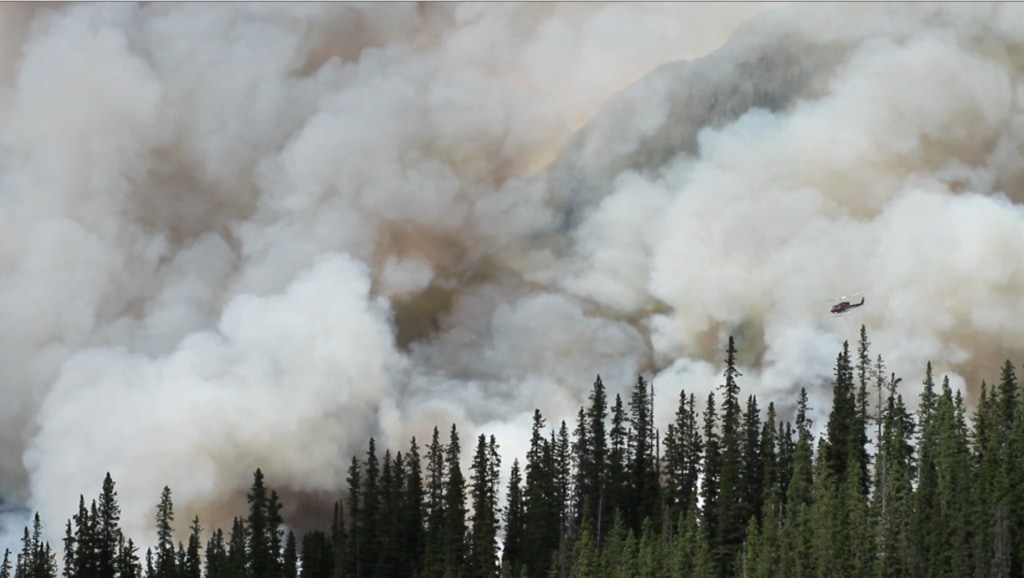Global Fire Weather Database
The Global Fire WEather Database (GFWED) integrates different weather factors influencing the likelihood of a vegetation fire starting and spreading. It is based on the Fire Weather Index (FWI) System, which tracks the dryness of three general fuel classes, and the potential behavior of a fire if it were to start. Each day, FWI values are calculated from global weather data, including satellite rainfall data from the Global Precipitation Measurement (GPM) mission.
The FWI System is the most widely used fire danger rating system in the world, and has been adopted for different boreal, temperate and tropical fire environments. GFWED provides a globally consistent fire weather dataset for fire researchers and managers to apply locally.
The Fire Weather Index component is suitable as a general index of fire danger. Globally, shifts in continental-scale fire activity follow seasonal changes in the FWI. Over South America and Africa, regions of high FWI and active agricultural burning shift with the tropical rain belts, seen in the GPM precipitation overlay. Over North America and Eurasia, the FWI will ‘activate’ in the spring, and shows how week-to-week surges in fire activity can be driven by high FWI values.
The global active fire, precipitation, and fire weather index data from January to September 2017, where active fires are indicated by black circles.
The global active fire and fire weather index data from January to September 2017 (without precipitation data).

Precipitation Color Bar from 0 to 300 millimeter per day for global precipitation.

Fire Weather Index color bar
In Indonesia, the Drought Code (DC) component is used to track the potential for agricultural fires to escape underground into peat soils, where they cannot be extinguished until the return of the monsoon rains. From August to October, areas of concentrated fire activity and high DC caused continuous smoke emissions and hazardously poor air quality until the return of the monsoon rains in November. Scientists are working with the Indonesian Agency for Meteorology, Climatology and Geophysics and the Ministry of Environment and Forestry to augment their operational FWI system with GPM precipitation.
Active fire, precipitation, and drought code over Indonesia. Active fires are indicated by black circles.
Active fire and drought code over Indonesia (without precipitation data).

Landcover of Indonesia
Active fire and drought code over Indonesia (4k version).
Active fire, precipitation, and drought code over Indonesia (4k version).

Drought Code color bar

Precipitation color bar from 0 to 250 millimeter per day for Indonesia.
In British Columbia, Canada, 2017 was a severe fire year, where the FWI is used for fire prevention and pre-preparedness. Through July and August, stretches of high FWI in the interior led to periods of extreme fire behavior and the highest annual recorded burned area for the province.
Active fire, precipitation, and fire weather index over British Columbia, Cananda, where active fires are indicated by black circles.
Active fire and fire weather index over British Columbia, Cananda.

Precipitation color bar from 0 to 150 millimeter per day for British Columbia, Cananda.
More information on GFWED and instructions on accessing the data are available from https://data.giss.nasa.gov/impacts/gfwed/
Credits
Please give credit for this item to:
NASA's Scientific Visualization Studio
-
Visualizer
- Cheng Zhang (USRA)
-
Data visualizer
- Horace Mitchell (NASA/GSFC)
-
Producer
- Ryan Fitzgibbons (USRA)
-
Scientists
- Dalia B Kirschbaum (NASA/GSFC)
- Robert Field (Columbia University)
-
Technical support
- Laurence Schuler (ADNET Systems, Inc.)
- Ian Jones (ADNET Systems, Inc.)
Release date
This page was originally published on Thursday, June 28, 2018.
This page was last updated on Sunday, February 2, 2025 at 10:37 PM EST.
Datasets used
-
Fire Location [Terra and Aqua: MODIS]
ID: 496Credit: Fire location data courtesy of MODIS Rapid Response Project (NASA/GSFC and University of Maryland - http://rapidfire.sci.gsfc.nasa.gov)
See all pages that use this dataset -
GFWED
ID: 999
Note: While we identify the data sets used on this page, we do not store any further details, nor the data sets themselves on our site.
![Complete transcript available.Universal Production Music: Big Found by Ran Shir [BMI], Rotem Moav [BMI]; Swirling Blizzard by Laurent Dury [SACEM]; Dry Ice by Alessandro Rizzo [PRS], Elliot Greenway Ireland [PRS], Paper Boy [PRS]; Into Motion by Peter Larsen [PRS] This video can be freely shared and downloaded. While the video in its entirety can be shared without permission, some individual imagery provided by Pond5.com is obtained through permission and may not be excised or remixed in other products. For more information on NASA’s media guidelines, visit https://www.nasa.gov/multimedia/guidelines/index.html](/vis/a010000/a014200/a014285/14285_Thumbnail.jpg)
